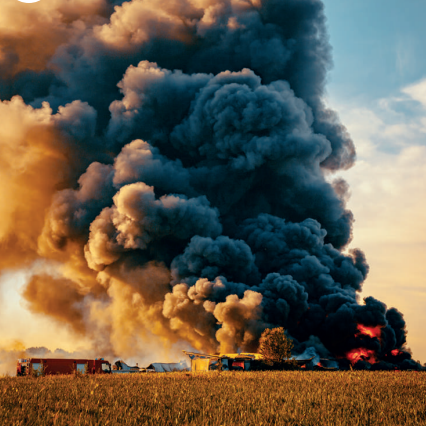A five-year snapshot on the corporate claims landscape

Few will be surprised to learn that a recent report on corporate insurance claims around the world found both the severity and the financial impact of claims increasing markedly – just at a time when spiraling inflation is pushing costs even higher and insurers are scrambling to increase valuations to levels more in line with reality.
Allianz Global Corporate & Specialty’s Global Claims Review 2022 looked at half a million claims dating from the five-year period from 2017 to 2021 and valued collectively at around £90bn. The report found that fire and explosion, natural catastrophes and poor workmanship and maintenance were among the main drivers of corporate insurance claims, collectively accounting for 45% of total claims costs.
In an increasingly chaotic, fast-changing, and disruption-prone world, broken supply chains have seen contingent business interruption claims rise to unprecedented levels. The impact of the Covid-19 pandemic has dramatically amplified this effect, while the war in Ukraine is creating further uncertainty, pushing up an already-elevated threat of cyber-attack impacts, and massively increasing the energy-costs component of commercial and industrial activity of almost every kind.
Higher property and asset values, more complex supply chains and the increasing costs associated with rebuilding and reinstatement have all contributed to mounting upward pressure on claims costs. Increasing costs from proliferating business interruption and cyber claims are creating challenges for insurance and reinsurance carriers that will not be quickly resolved.
But inflation – currently rising to levels not seen in decades in many economies around the world – is in many ways the most urgent challenge facing insurance firms. Asset undervaluation across entire books of business is currently spreading faster than carriers can address it – creating significant C-suite unease throughout the global insurance community. The challenge is only compounded by the way inflation puts pressure on claims costs from many directions at once. As materials, energy and transportation costs increase, so do those of the many suppliers – from lawyers to disaster recovery firms – who play a part in the broader and claims process – and, in particular, making good damage sustained by claimant businesses.
The report found that improvements in risk management and fire prevention have failed to stop fire/explosion topping the list as the biggest single cause of corporate insurance losses, accounting for more than a fifth of all claims by value.
The second biggest driver of claims costs, unsurprisingly, was natural catastrophes (15%), with windstorms the number-one culprit within the Nat Cat category. Such events are only likely to become more common in future, given the increasingly unambiguous signals of a climate crisis coming down the tracks – and the fact that two of the past five hurricane seasons in the U.S. have been among the three most costly to date.
Faulty workmanship/maintenance was the third most costly source of claims, potentially suggesting that standards are slipping in the world of design, construction and manufacturing. Insurers will be less than encouraged by that thought. A corner cut here and there, might seem trivial at the point of commission, but small errors can, and demonstrably do, lead to big losses.
Cyber claims have not yet climbed into the top ten, still lagging behind items such as Aviation and Marine incidents, negligent advice, and even water damage. But they are increasingly significantly – fueled in particular by a surge in ransomware attacks. The Ukraine war has played a part in driving recent cyber risk proliferation, but one way or another, escalating cyber risk is likely to be with us for many years to come.
The full report is available here.
